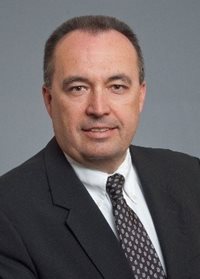Bechtel, a global leader in engineering, procurement, construction, and project management, today announced that Brian Reilly, a 35+ year veteran of nuclear construction, will become the next project director for the Waste Treatment and Immobilization Plant project at the U.S. Department of Energy’s Hanford Site in Washington state. Reilly will guide completion, startup, and commissioning of WTP’s first phase: the seven-story, sports arena-sized Low Activity Waste Facility and its associated support facilities.
Reilly succeeds Peggy McCullough, who will move to Bechtel’s operational headquarters in Reston, Virginia, to lead the company’s Nuclear, Security, and Operations business line. Both are Bechtel senior vice presidents.
“Brian’s decades of experience in construction and startup of commercial and government nuclear projects will be a great asset at WTP as the project continues its crucial next phase,” said Barbara Rusinko, president of Bechtel’s government services and nuclear power global business unit. “Starting up a radioactive waste treatment facility is a multi-year, rigorous, deliberate process. Peggy has positioned the WTP project well for this transition, and our goal is to turn over a fully functioning Low-Activity Waste Facility to the Department of Energy by 2022.”
Since 2014, Reilly has led the $6.5 billion design and construction project for the National Nuclear Security Administration’s Uranium Processing Facility in Oak Ridge, Tennessee. The UPF will replace aging national security facilities that process enriched uranium for nuclear defense and U.S. Naval propulsion. Under Reilly’s leadership, UPF has achieved 90% design completion and is poised to start construction of its nuclear facility next year.
“I’m eager to work with the employees, stakeholders, and community,” said Reilly. “Together, we can build on the successes and the plant will vitrify waste in just a few years with the highest quality and safety.”
Treating Manhattan Project and Cold War-era waste
Hanford is the United States’ most challenging and complex radioactive waste cleanup site. It had nine nuclear reactors as well as chemical separation facilities that created plutonium for U.S. nuclear weapons from 1944 to 1987. Approximately 56 million gallons of chemical and radioactive waste is currently stored and awaiting treatment in underground tanks, some of which have leaked into the ground.
In WTP’s first phase, the waste will be piped to the Low-Activity Waste facility, mixed with silica and other materials, melted, and poured into stainless steel containers where it will solidify. The containers will then be disposed at Hanford’s existing low-level waste disposal site. In a later phase, the remaining high-level waste will be vitrified in another facility still under construction.
Construction of an analytical laboratory and more than 20 support facilities are substantially complete. Construction of the Low-Activity Waste Facility is expected to be complete by June 2018.
Bechtel is a leader in environmental cleanup and restoration of former nuclear weapons production sites. The company’s unparalleled experience spans nearly 40 years and includes the cleanup, remediation, and closure of nuclear waste facilities in Washington state, Idaho, New Mexico, Tennessee, Nevada, and South Carolina, including the only currently operating vitrification plant in the U.S. – the Defense Waste Processing Facility at the DOE’s Savannah River Site.


